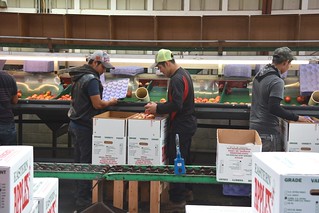The TPP Agreement is a trade agreement among twelve of the Pacific rim countries, in what would be the world’s largest free trade area, accounting for 40 percent of the global economy. These countries include Singapore, Brunei, New Zealand, Chile, United States, Australia, Peru, Vietnam, Malaysia, Mexico, Canada, and Japan.
Our current trade policy, puts our workers and businesses at a disadvantage, with higher costs for American goods, more barriers to trade, and lower standards for workers and the environment abroad than we have at home. With the TPP, we can change the rules of trade to benefit America’s middle class. If we don’t, competitors like Chine, who don’t share our values, will step in.
It is possible to write a trade agreement that is fair to workers and provides broadly shared benefits for all Americans? But when people other than those representing the interests of big businesses are shut out of writing the rules of the economy, that outcome is unlikely. TPP threatens internet freedoms and civil liberties, collective bargaining rights, public and environmental health, food safety and financial stability.
The U.S Trade Representative’s office said the agreement would eliminate or significantly reduce tariffs on U.S. products and deter non-science based sanitary and phytosanitary barriers that have put American agriculture at a disadvantage in TPP countries in the past. However, this new agreement seems like it will have a positive impact on Agriculture. It will eliminate import taxes as high as 40% on U.S. poultry products, 30% on soybeans, and 40% on fruit exports. It is estimated that total U.S. exports could increase by $130 billion.




